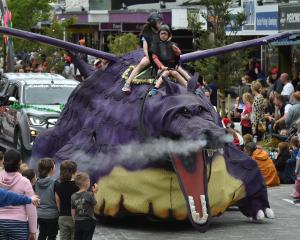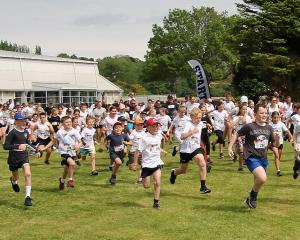Underwater flight - looking over a Yellow-eyed penguin's shoulder from Tawaki Project on Vimeo.
Bobbing up to the surface of the sea, a yellow-eyed penguin takes only a small breath before she dives down again in her search for food.
This is one of the most surprising findings from the trial of a GoPro-type camera attached to the back of the yellow-eyed penguin, which was released from Boulder Beach on Otago Peninsula this summer.
''We were amazed at how little time she spent breathing on the surface ... She hardly ever took a breath as she was looking underneath her - it was an eye-opener, even for the seasoned penguin scientists,'' marine scientist Dr Thomas Mattern said.
The project aimed to find out what was affecting penguins' search for food at sea, given for the past three years chicks had died of starvation on land.
The trial of the specially designed GoPro-type camera on the yellow-eyed penguin had its moments.
First, the scientists realised putting a time trigger on the camera to film the penguins when they reached their foraging area was not going to work because of temperature fluctuations affecting the battery, so they decided to forgo that aspect of the trial.
Instead, the waterproof camera attached to the penguin had only a GPS unit.
''We were hoping the bird would come back the same night, but the misty weather meant no penguins came back,'' Dr Mattern said.
For three days, the scientists could see nothing at sea and few birds returned.
''We thought something had happened.''
But finally the bird returned.
''We were stoked. It was really exciting till we popped open the camera casing and found it filled with water and the camera destroyed.''
A depressed Dr Mattern returned home, but a bout of curiosity inspired him to rinse the memory card in distilled water and dry it out.
''I popped it in a camera and, wow, it's still intact. I realised I have the data after all.''
There was 75 minutes of the penguin's journey offshore to watch, including an encounter with a jellyfish.
''It was 1am. We sat in front of the camera totally fascinated,'' he said.
A review of the footage the next day showed the scientists had much more information than they had thought possible, even though the bird did not reach its foraging grounds.
''You could hear the flippers beating, so we can measure the frequency to work out their energy expenditure. There is huge potential in this technology.''
Now they knew the concept worked and they decided to build a new prototype camera which was smaller and had a modified battery so they could install a time trigger, Dr Mattern said.
''Next year, we hope to deploy them on several penguins, to see what happens on the sea floor,'' he said.
He hoped being able to see what was going on the sea floor would make more impact on politicians and help the public understand the penguins' plight.
''If we can make a big impact, we could initiate a change in thinking about what is happening in our ocean.''












